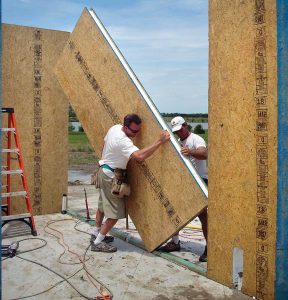A team of researchers from Universidad Politécnica de Madrid has devised a new interior panel board using textile waste that has shown to improve both the thermal and acoustic properties of new constructions, as well as reducing the overall environmental impact and quantity of greenhouse gas emissions normally connected with the production of materials used in construction.
Building construction is well known for its high energy consumption and the excessive co2 emissions that can result from the production of its necessary materials, as well as the differing effects on building and energy efficiency that those materials can have. It’s because of these environmental issues that a new European law was created in 2002 to encourage the recycling of material waste. Making good use of waste materials doesn’t only reduce the energy consumption in the building of new developments, but also increases their effective life cycle.
About 5.8 million tons of textile waste are discarded in the European Union every year, with only 25% of that being recycled while the remaining 4.3 million tons are either burned or buried. The researchers from UPM made use of these discarded textile materials to attempt to create a panel board that can be used as the inner division in both new constructions and older building renovations.
Happily, the panels they came up with as a result of their experiments have turned out to be lighter than those already on the market and give far better thermal and acoustic performance. The key point, though, is that the use of these recycled materials has resulted in significant energy consumption reductions during the manufacturing process and a much smaller environmental impact, thanks to much less need to incinerate or store this waste in landfills.
The aim of this study is to reintroduce this textile waste into the production chain as a recycled alternative to the materials already used. The textile waste doesn’t require any special treatment since they fabricated from the remnants of quality control products to begin with, including manufacturing offcuts or thread remnants.
Regular board productions use chemical binders which produce pollutant toxic emissions when imbuing them with their fire retardant properties. It’s been suggested that a low consumption binder with exceptional properties against fires would be more effective, so the researchers developed a panel of binder textile fibre with natural hydraulic lime and, according to trials, their panels have a lower density than others available. This means that the support systems of the panels can be lightened.
Also, these panels improved thermal behaviour, offering half the thermal conductivity of other commercial materials. At the same time, the introduction of textile fibres also improved the acoustic behaviour of the panels, increasing sound absorption, proving their advantages over current panels on the market.



